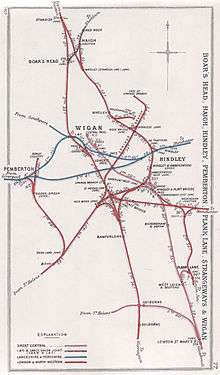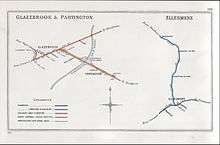Wigan Junction Railways
| Wigan Junction Railway | ||||||||||||||||||||||||||||||||||||||||||||||||||||||||||||||||||||||||||||||||||||||||||||||||||||||||||||||||||||||||||||||||||||||||||||||||||||||||||||||||||||||||||||||||||||||||||||||||||||||
|---|---|---|---|---|---|---|---|---|---|---|---|---|---|---|---|---|---|---|---|---|---|---|---|---|---|---|---|---|---|---|---|---|---|---|---|---|---|---|---|---|---|---|---|---|---|---|---|---|---|---|---|---|---|---|---|---|---|---|---|---|---|---|---|---|---|---|---|---|---|---|---|---|---|---|---|---|---|---|---|---|---|---|---|---|---|---|---|---|---|---|---|---|---|---|---|---|---|---|---|---|---|---|---|---|---|---|---|---|---|---|---|---|---|---|---|---|---|---|---|---|---|---|---|---|---|---|---|---|---|---|---|---|---|---|---|---|---|---|---|---|---|---|---|---|---|---|---|---|---|---|---|---|---|---|---|---|---|---|---|---|---|---|---|---|---|---|---|---|---|---|---|---|---|---|---|---|---|---|---|---|---|---|---|---|---|---|---|---|---|---|---|---|---|---|---|---|---|---|
| Overview | ||||||||||||||||||||||||||||||||||||||||||||||||||||||||||||||||||||||||||||||||||||||||||||||||||||||||||||||||||||||||||||||||||||||||||||||||||||||||||||||||||||||||||||||||||||||||||||||||||||||
| Status | closed | |||||||||||||||||||||||||||||||||||||||||||||||||||||||||||||||||||||||||||||||||||||||||||||||||||||||||||||||||||||||||||||||||||||||||||||||||||||||||||||||||||||||||||||||||||||||||||||||||||||
| Locale | North West England | |||||||||||||||||||||||||||||||||||||||||||||||||||||||||||||||||||||||||||||||||||||||||||||||||||||||||||||||||||||||||||||||||||||||||||||||||||||||||||||||||||||||||||||||||||||||||||||||||||||
| Termini |
Glazebrook West Junction Wigan | |||||||||||||||||||||||||||||||||||||||||||||||||||||||||||||||||||||||||||||||||||||||||||||||||||||||||||||||||||||||||||||||||||||||||||||||||||||||||||||||||||||||||||||||||||||||||||||||||||||
| Technical | ||||||||||||||||||||||||||||||||||||||||||||||||||||||||||||||||||||||||||||||||||||||||||||||||||||||||||||||||||||||||||||||||||||||||||||||||||||||||||||||||||||||||||||||||||||||||||||||||||||||
| Track gauge | 1,435 mm (4 ft 8 1⁄2 in) standard gauge | |||||||||||||||||||||||||||||||||||||||||||||||||||||||||||||||||||||||||||||||||||||||||||||||||||||||||||||||||||||||||||||||||||||||||||||||||||||||||||||||||||||||||||||||||||||||||||||||||||||
| ||||||||||||||||||||||||||||||||||||||||||||||||||||||||||||||||||||||||||||||||||||||||||||||||||||||||||||||||||||||||||||||||||||||||||||||||||||||||||||||||||||||||||||||||||||||||||||||||||||||


The Wigan Junction Railways connected Glazebrook West Junction with the Lancashire Coalfields at Wigan.
History
The Wigan Junction Railways (WJR) was incorporated on 16 July 1874.[1] It was to link the coalfields around Wigan with the Cheshire Lines Committee (CLC) line at Glazebrook,[2] on the line between Liverpool Central and Manchester Central.[3] Promoted by local businessmen, it came to the interest of the board of the Manchester, Sheffield and Lincolnshire Railway (MSLR) which suggested that it might become an extension of the CLC, in which the MSLR had a one-third share.[4] However, of the MSLR's other two joint partners in the CLC, the Midland Railway (MR) were in favour, whereas the Great Northern Railway (GNR) were not. Accordingly, the MSLR and MR decided that its construction should be supported by both companies, and later on be formally added to the Sheffield and Midland Railway Companies' Committee (SMRCC), a body which was owned jointly by the MSLR and MR only.[5]
Construction began on 27 October 1876, the first sod being cut by the Home Secretary, the Rt. Hon. R.A. Cross,[5] who was also MP for South West Lancashire.[6] The line was opened between Glazebrook and Strangeways for goods on 16 October 1879, and was extended to Wigan on 1 April 1884; passenger services also began on 1 April 1884.[3] The trains were provided by the MSLR.[3] Wigan Central railway station was opened on 3 October 1892.[3]
A branch to St Helens was built from Lowton St. Marys:[7] the Liverpool, St Helens and South Lancashire Railway (LSHSL); it opened on 2 January 1900.[8][9]
The CLC constructed a curve from their line at Dam Lane Junction to the WJR line at Glazebrook Moss Junction; known as Glazebrook West Curve. 37 chains (740 m) in length, it was authorised on 25 May 1900 and opened on 1 July 1900, creating a triangular junction at Glazebrook; by this means, trains from Wigan (and also St. Helens) could run to Warrington and Liverpool Central.[10][11]
On 4 August 1905 the GCR was authorised to absorb both the WJR and the LSHSL, which was formally carried out on 1 January 1906.[3][12]
Route
- Wigan Central
- Lower Ince[13]
- Hindley South
- Bickershaw and Abram[14]
- West Leigh and Bedford[15]
- Lowton St Mary's[16]
- Culcheth
- Newchurch Halt
- Glazebrook
In April 1884, there were seven trains in each direction per day, all running between Manchester Central and Wigan. Six of them called at all stations between Glazebrook and Wigan, and some also called at Urmston, Flixton and Irlam. There were two expresses: the 10:40 from Manchester reached Wigan at 11:15, calling only at Glazebrook; and the 12:00 from Wigan, which ran non-stop to Manchester in half an hour. The Sunday service was of just two trains in each direction, calling at Urmston, Flixton, Irlam and all stations between Glazebrook and Wigan.[17]
Future
In 2009 ATOC identified the south part of the line connecting Glazebrook with the Chat Moss line as a feasible link line for freight use.[18]
Notes
- ↑ Dow 1962, pp. 68,104.
- ↑ Conolly 1976, p. 45, sections C3,C2,D2.
- 1 2 3 4 5 Awdry 1990, p. 171.
- ↑ Dow 1962, p. 8.
- 1 2 Dow 1962, p. 104.
- ↑ Rayment 2010, Lancashire South West.
- ↑ Conolly 1976, p. 45, sections C3,D3.
- ↑ Awdry 1990, p. 144.
- ↑ Dow 1965, pp. 9–11.
- ↑ Dow 1965, p. 194.
- ↑ Dow 1965, p. 32.
- ↑ Dow 1965, p. 106.
- ↑ Disused Stations: Lower Ince
- ↑ Disused Stations: Bickershaw & Abram
- ↑ Disused Stations: West Leigh & Bedford
- ↑ Disused Stations: Lowton St. Marys
- ↑ Dow 1965, p. 354.
- ↑ "Connecting Communities - expanding access to the rail network" (PDF). London: Association of Train Operating Companies. June 2009. p. 21. Archived from the original (pdf) on 29 July 2013. Retrieved 20 February 2015.
References
- Awdry, Christopher (1990). Encyclopaedia of British Railway Companies. London: Guild Publishing. CN 8983.
- Conolly, W. Philip (January 1976). British Railways Pre-Grouping Atlas and Gazetteer (5th ed.). Shepperton: Ian Allan. ISBN 0-7110-0320-3. EX/0176.
- Dow, George (1962). Great Central, Volume Two: Dominion of Watkin, 1864-1899. Shepperton: Ian Allan. ISBN 0-7110-1469-8.
- Dow, George (1965). Great Central, Volume Three: Fay Sets the Pace, 1900-1922. Shepperton: Ian Allan. ISBN 0-7110-0263-0.
- Rayment, Leigh (11 May 2010). "The House of Commons: Constituencies Beginning with L". Leigh Rayment's Peerage Page. Sydney, NSW. Retrieved 13 June 2010.